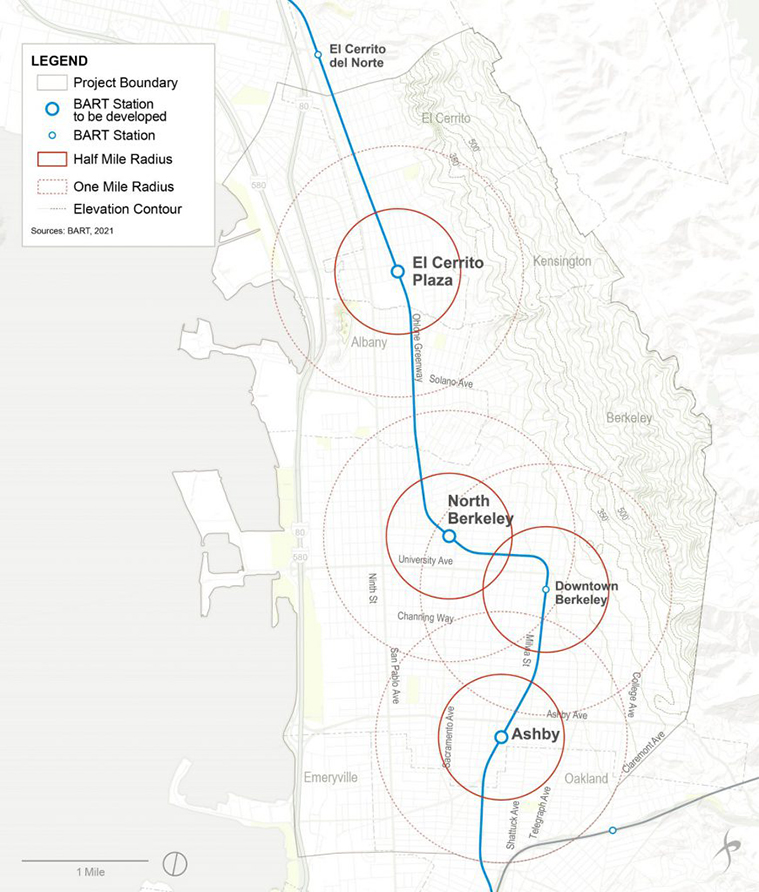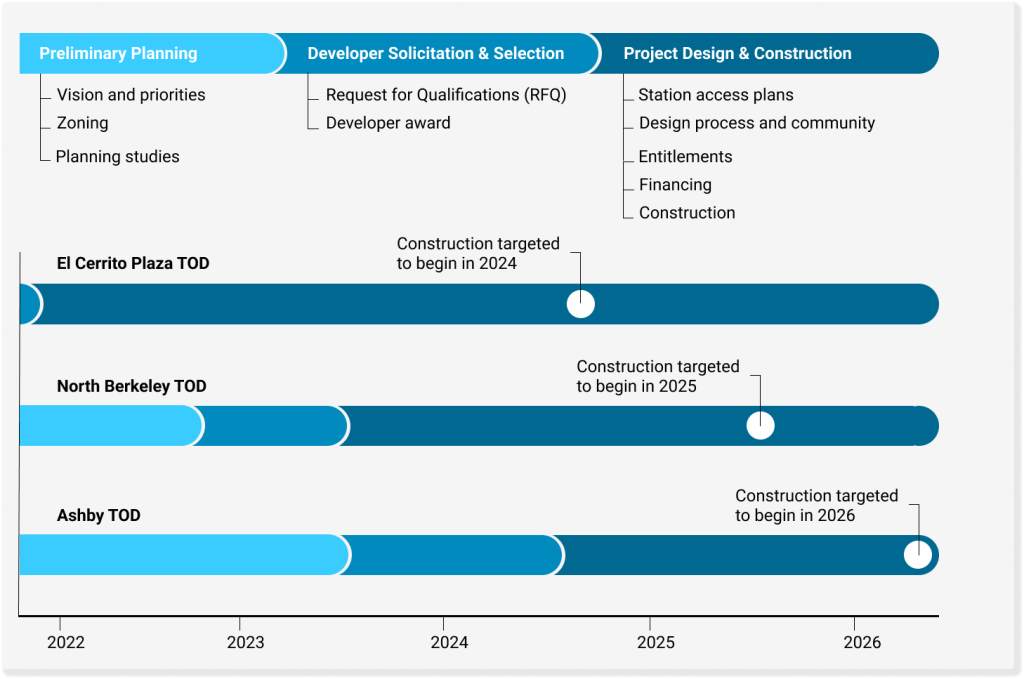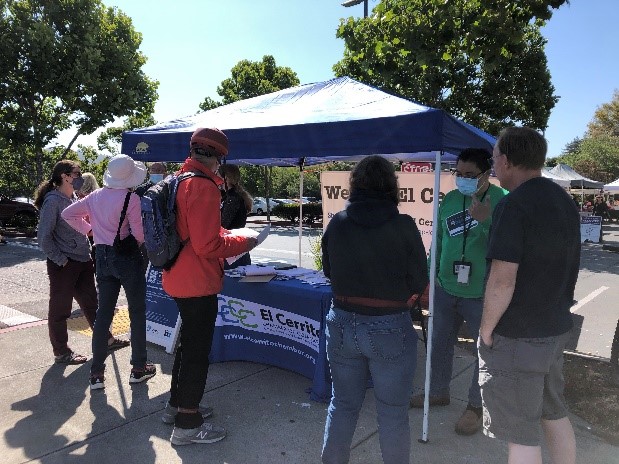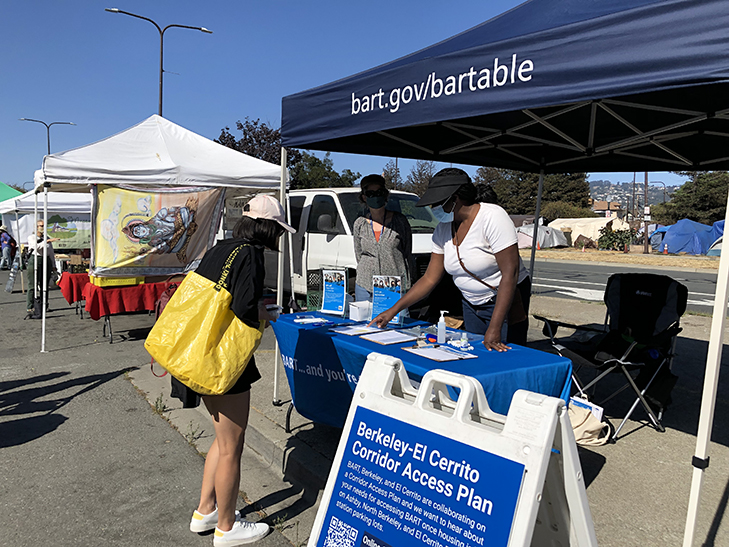Welcome to the third online and final open house for the Berkeley – El Cerrito Corridor Access Plan (Corridor Access Plan). This open house is focused on the draft plan, which contains strategies related to access to BART stations along this corridor. Your input for the draft Corridor Access Plan will be collected in the survey, which is open through January 8, 2023. This is an important follow up to online open house #1 and online open house #2.
- If you need language assistance services, please call (510) 464-6752.
- Si necesita servicios de asistencia de idiomas, llame al (510) 464-6752.
- 如需語言協助服務,請致電 (510) 464-6752.
- 통역이 필요하신 분은, 510-464-6752 로 문의하십시오.
- Kung kailangan mo ang tulong ng mga serbisyo ng wika, paki tawagan ang (510) 464-6752.
- Nếu quý vị cần dịch vụ trợ giúp về ngôn ngữ, xin vui lòng gọi số (510) 464-6752.
Future access to the Berkeley and El Cerrito stations
BART and the cities are working with developers to build more than 2,000 affordable and market rate homes on the El Cerrito Plaza, North Berkeley, and Ashby BART stations parking lots. Developing housing on BART property helps address the region’s housing crisis. It also supports BART’s ability to provide high-quality service through increased ridership from the future residents.
BART has been leading the Corridor Access Plan, in collaboration with Berkeley and El Cerrito, to identify options for riders to get to and from BART once homes are built on the station parking lots. The Corridor Access Plan balances the need for BART rider parking, which is expensive to build and uses a lot of space, with sustainable transportation options that enhance community vibrancy and safety.
Coordination with cities and other entities has been key throughout this process as many of the access strategies are outside of BART’s control. For example, constructing pedestrian and bicycle improvements that are on city streets near BART stations. Another example is planning and funding bus transit improvements on San Pablo Avenue, a road that goes through multiple jurisdictions. The draft plan identifies who would implement the recommended strategies and who would support. More detail can be found under the section, “Who will implement access strategies?”
The Corridor Access Plan is funded by Caltrans and the Federal Transit Administration.

How this open house works
This is the final online open house for the Corridor Access Plan. Click through the sections using the navigation bar at the top of the page, or scroll down the page to:
- Learn about the plan. Review the draft Corridor Access Plan and other sections as needed of this open house. Determine which strategies help you get to and from BART once the station parking lots are developed and if next steps for implementing those strategies are clear.
- Share your feedback. Take the survey in the “survey” section to help us understand if the draft plan identifies strategies that will help you get to and from BART.
- Spread the word. Share this site with your neighbors, community members, family, and friends who live in the corridor plan area or use the El Cerrito and Berkeley BART stations.
You can still view the first two online open houses if you need more background information:
- Online open house #1: BART explained the Corridor Access Plan and requested feedback from you about your needs for getting to and from BART in the survey that was open July 2 to August 20, 2021
- Online open house #2: BART shared information with you about a wide range of potential strategies for how riders can get to and from the stations when the station parking lots are developed. We heard how these strategies may work for you in the survey that was open April 20 to May 18, 2022.
Who would implement access strategies?
The following agencies and entities would play important roles in implementing strategies recommended in the Corridor Access Plan. Specific implementation roles for individual strategies will be included in the final Corridor Access Plan.
AC Transit would lead bus strategies, such as the addition of new lines or improvement of existing lines. AC Transit would also implement any changes to Transbay bus service.
Cities of Berkeley and El Cerrito would lead implementation of infrastructure strategies around the stations, such as bicycle and pedestrian improvements, street lighting, and parking management plans
Caltrans would coordinate with cities and approve any changes on state-designated routes, such as Ashby Avenue (State Route 13) and San Pablo Avenue (State Route 123).
BART would lead implementation of strategies on BART property such as on-site parking and coordinating timed transfers between AC Transit buses and BART trains. BART would also work with the cities and partner agencies on securing funding for access improvements off its property.
Regional and county agencies, like the Metropolitan Transportation Commission, Alameda County Transportation Commission, West Contra Costa Transportation Advisory Committee, and the Contra Costa Transportation Authority, would lead strategies across multiple jurisdictions, such as improvements along San Pablo Avenue, and play a key role in distributing funding for high priority strategies.
Private companies, local organizations, and non-profit organizations may play a role in implementing strategies, such as creating an electric-bike lending library. Technology companies that create apps for ride sharing and car parking would play a role in providing access to the stations.
Developers would work with BART and cities to implement access improvements on and near BART property.
Related projects
Many related plans and projects which BART and the cities are currently collaborating include:






Bike
578
Car / Dropoff
40
Parking
66
Transit
230
Walking
357
Other
127